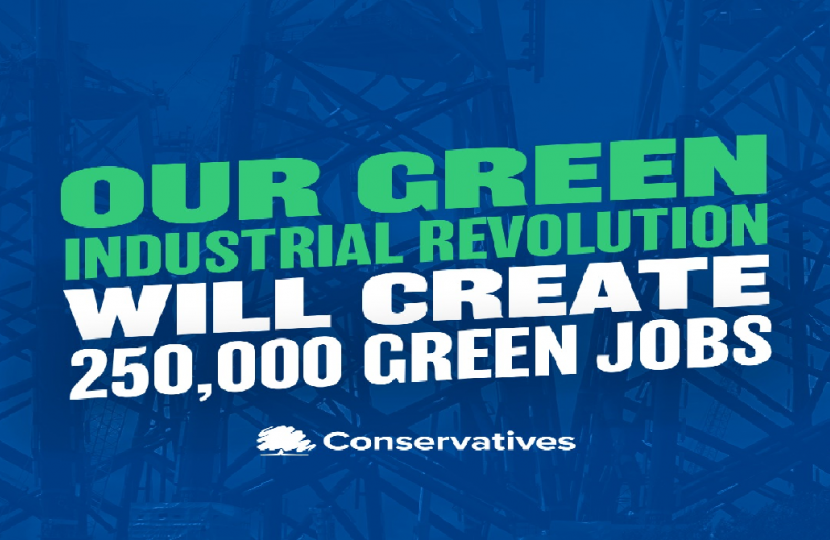
The Prime Minister today sets out his ambitious ten point plan for a green industrial revolution which will create and support up to 250,000 British jobs.
Covering clean energy, transport, nature and innovative technologies, the Prime Minister’s blueprint will allow the UK to forge ahead with eradicating its contribution to climate change by 2050, particularly crucial in the run up to the COP26 Climate Summit in Glasgow next year.
The plan – which is part of the PM’s mission to level up across the country - will mobilise £12 billion of government investment to create and support up to 250,000 highly-skilled green jobs in the UK, and spur over three times as much private sector investment by 2030.
At the centre of his blueprint are the UK’s industrial heartlands, including in the North East, Yorkshire and the Humber, West Midlands, Scotland and Wales, which will drive forward the green industrial revolution and build green jobs and industries of the future.
The Ten Point Plan
The Prime Minister’s ten points, which are built around the UK’s strengths, are:
- Offshore wind: Producing enough offshore wind to power every home, quadrupling how much we produce to 40GW by 2030, supporting up to 60,000 jobs.
- Hydrogen: Working with industry aiming to generate 5GW of low carbon hydrogen production capacity by 2030 for industry, transport, power and homes, and aiming to develop the first town heated entirely by hydrogen by the end of the decade.
- Nuclear: Advancing nuclear as a clean energy source, across large scale nuclear and developing the next generation of small and advanced reactors, which could support 10,000 jobs.
- Electric vehicles: Backing our world-leading car manufacturing bases including in the West Midlands, North East and North Wales to accelerate the transition to electric vehicles, and transforming our national infrastructure to better support electric vehicles.
- Public transport, cycling and walking: Making cycling and walking more attractive ways to travel and investing in zero-emission public transport of the future.
- Jet Zero and greener maritime: Supporting difficult-to-decarbonise industries to become greener through research projects for zero-emission planes and ships.
- Homes and public buildings: Making our homes, schools and hospitals greener, warmer and more energy efficient, whilst creating 50,000 jobs by 2030, and a target to install 600,000 heat pumps every year by 2028.
- Carbon capture: Becoming a world-leader in technology to capture and store harmful emissions away from the atmosphere, with a target to remove 10MT of carbon dioxide by 2030, equivalent to all emissions of the industrial Humber today.
- Nature: Protecting and restoring our natural environment, planting 30,000 hectares of trees every year, whilst creating and retaining thousands of jobs.
- Innovation and finance: Developing the cutting-edge technologies needed to reach these new energy ambitions and make the City of London the global centre of green finance.
We will deliver on our plan with new investment:
- Providing an extra £200 million to support carbon capture, helping to support up to 50,000 jobs in areas with heavy industry. This will bring total funding to £1 billion, which will be used to create to carbon capture clusters by the mid-2020s, with a further two planned by 2030, in areas such as the Humber, Teesside, Merseyside, Grangemouth and Port Talbot.
- Providing up to £500 million to trial homes using hydrogen for heating and cooking. We aim to create a hydrogen neighbourhood in 2023, with plans for a full hydrogen town before the end of the decade. £240 million of this funding will go into new hydrogen production facilities.
- Supporting the next generation of nuclear power plants, helping to generate low carbon electricity and end our contribution to climate change by 2050. We will provide £525 million to help develop large and smaller-scale nuclear plants, and research and develop new advanced modular reactors.
- Ending the sale of new petrol and diesel vehicles by 2030 – ten years earlier than planned – while supporting both individuals and car manufacturers transition to electric vehicles. No new petrol or diesel cars will be sold after 2030, although the sale of hybrid cars and vans that can drive a significant distance without emitting carbon can be sold until 2035. To support this transition, we will provide £1.3 billion to accelerate the rollout of chargepoints in homes, on streets and on motorways; £582 million in grants for those buying zero or ultra-low emission vehicles; and nearly £500 million for the development and mass-scale production of electric vehicle batteries - boosting international investment into our strong manufacturing bases including in the Midlands and North East.
- Upgrading the energy efficiency of homes and public buildings, cutting carbon while saving people money on their heating bills. We will invest £1 billion next year into making new and existing homes and public buildings more efficient, extending the Green Homes Grant voucher scheme by a year and making public sector buildings greener and cutting bills for hospitals and schools, as part of the Public Sector Decarbonisation Scheme.
- Providing £20 million to develop green maritime technology. The funding will be used to develop greener maritime, such as feasibility studies on key sites, including Orkney and Teesside
